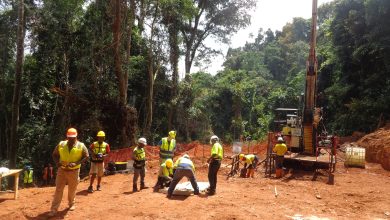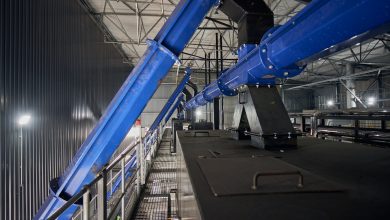
Three-Dimensional Laser Measurement System for Truck Load Volumes
Effective measurement, increased productivity
Measurement of material volume in truck trays has been an error-prone and costly process. Handily, the use of 3D laser has revolutionised the task, bringing about efficiency and significant cost savings.
Empirical studies gathered globally indicate increasing awareness among mining companies about the need to revise their approach to truck load measurement. This trend should not be surprising. Truckload measurement is being embraced as one of the numerous channels through which they can achieve efficiencies and reap considerable cost savings simultaneously.
However, the traditional approaches to weight measurement may have been deemed fit for purpose in the past. However, it is emerging that they could fall short of meeting current expectations. And so, this is necessitating the adoption of alternative techniques of truck load measurement.
The valid case for embracing alternative techniques becomes more appreciated when the limitations of traditional truck load measurement are examined.
Common challenges with traditional weighing
Numerous challenges are encountered when using traditional truck load measurement techniques like a static weighing scale. Based on information from common cases, these include but may not be limited to:
- Variance in the density of material determined by the source of the ore on the rockface and the way the bucket is loaded.
- There is no guarantee of getting the actual weight-to-volume ratios of material.
- Moisture composition can make the load materials heavier than they are, consequently its weight.
- An Australian technical paper determined that overloading massively increases fuel costs and CO2 emissions. Titled, Haul truck fuel consumption and CO2 emission under various engine load conditions. Using the case study of a large mining truck (CAT 797B), the team of researchers involved determined that by overloading a truck by a “mere“ 10 per cent, fuel consumption and costs could escalate by about US$400,000 annually as well as adding add 900mt CO2 emissions per truck.
- Other weighing techniques do not account for the carry back of material being shifted. Shift tallies are not deducted.
- Off-centre loading is a common problem. The worst part is that it causes component wear necessitating replacement costs.
Naturally, bearing in mind the inadequacies of traditional weighing, mine operators are pinning their hopes on innovations. Nonetheless, contrary to expectations, the innovations are sometimes erroneously punted as the cure-alls do not eliminate the challenges. For instance, this has been observed with onboard weighing, which cannot be deployed as a complete solution, given their unique shortcomings, mainly:
- Bulk density changes cannot be accurately tracked
- The need for costly constant maintenance and calibration
- The requirement of large trucks to spend time on static weighbridges is time-consuming. This could lead to the loss of 1 to 2 loads per shift per truck. Simply put, higher cost per tonne hauled.
- Cases of heavy trucks moving a dynamic weighing systems scale’s foundation are not uncommon. In most cases, they cause inaccurate measurements. Accordingly, to a review from Payload Management, a subsidiary of Loadtech, this could be in the region of 3 to 5 per cent or even higher.
- Besides the need for constant calibration and maintenance, what makes on-board truck scales all the more expensive (is that every truck requires its own system. This becomes more expensive when a mine has a large fleet of haul trucks.
3D volumetric laser measurement
Groundbreaking discoveries are being made in product research and development (R&D) and enjoying increasing usage in payload management, replacing traditional methods. This has presented widening options for mining companies to use in their payload management. And one of the techniques that have been earning plaudits is 3D volumetric laser measurement.
3D volumetric laser scanning of bulk material is answering the call for the need for a technology that can help maximise productivity by optimising every load, translating into improved profit. It is a technique that measures all loads and automatically generates 3D scan images.
Volumetric Scanning systems use 3D imaging software to measure bulk materials that have been loaded into trucks and rail wagons. While a vehicle passes slowly beneath the scan head, the system can automatically scan the load, record the results, and send them directly to an operator.
In 3D laser high precision volumetric bulk material measurement systems, the truck bed is placed underneath the sensor(s) underneath a sensor. The truck is measured in empty condition and when filled. As the truck passes slowly beneath the scan head, the load is scanned, results recorded and sent to the operator. In the end, the benefit of 3D volumetric scanning is that ensures reliable accuracy and performance. Furthermore, there is virtually no impact on moisture content or uneven loads.






